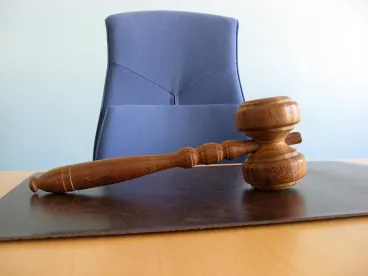Regardless of when Gov. Whitmer's stay-at-home orders end, most courts will not be fully open to the public for the foreseeable future. Faced with this uncertainty, most courts have begun conducting motion and evidentiary hearings via Zoom. Over the last few weeks, many of us have gotten used to teleconferencing for meetings, mediations and depositions, but court hearings present unique challenges. The process is sure to evolve in the coming weeks and months, but so far we know the following:
Pros
1. Timing. Courts and litigants are finally moving forward with hearing dates that have been stalled. After two months of mostly dealing with emergencies, courts can finally start to clear their dockets. Parties can start to make progress in their divorces, and get decisions in their interim and post-judgment their disputes.
2. Convenience. Litigants do not need to deal with travel to court, parking or security lines, as they can attend the hearings from the comfort of their homes, offices or cars. The litigants avoid paying those same costs for their lawyers to attend the hearing including travel time.
3. Witness Credibility. Some judges feel that Zoom hearings allow them to truly assess witness credibility since they are making prolonged eye-to-eye contact, often on a large screen in their courtrooms. Such a format allows for fewer distractions and more focus on the witness than in a traditional courtroom.
4. First-hand Home Assessment. Judges can immediately resolve a parent's concerns about the other parent's home being deficient for parenting time by seeing the home, the child's room and the refrigerator/pantry first-hand.
5. Exhibits. Teleconferencing will force attorneys to be better prepared and reach agreements with opposing counsel as to exhibits.
Cons
Most of the concerns around Zoom hearings revolve around the courts' live broadcasting of the hearings on YouTube to comply with the Michigan Supreme Court's administrative order that courtrooms must remain open to the public.
1. Control. Judges cannot control a virtual courtroom the same way they can a real courtroom in terms of who is physically present, who is using a cell phone, who is talking to whom, who is coaching witnesses, etc.
2. Who Really Is Watching? In theory, anyone can walk into a real courtroom to watch a family law hearing, but the reality is that most people are not going to take the time from work, drive to court, find parking, go through security, etc., unless it is a very compelling reason. But, with more people at home, they have more time on their hands, and if all they have to do is sit on their laptop and anonymously log on to YouTube, there could be many lurkers – coworkers, bosses, neighbors, church parishioners, or worse yet, children. While many of us struggle with the technology, our tech-savvy children live on YouTube and could easily discover ugly details of their parents' divorce case.
3. Protecting the Integrity of Testimony. In trials/evidentiary hearings judges will usually sequester third-party witnesses in the hallway outside the courtroom. With YouTube access and Zoom, sequestration and cell phone usage is much harder to enforce. Will judges be able to tell if witnesses are being coached or using notes?
4. Illegal Recordings. YouTube is supposed to display a warning that the court hearings are not allowed to be recorded by the public – only courts are able to use the record feature on Zoom. However, realistically, courts have no way of knowing if third parties have illegally recorded the hearing on their cell phones.
5. Disclosure of Confidential Information. You may need to share confidential financial, medical or personal information in family law hearings – tax records, bank statements, CPS reports, psychological evaluations, etc. If documents are being introduced into evidence through Zoom's share screen feature, these will also be visible on YouTube. How long before hackers figure out that trolling court hearings is a good way to gain access to account numbers and birth dates?
6. Safety in Domestic Violence Cases. If parties are residing in the same home, it may be dangerous for domestic violence survivors to safely participate in court hearings. Survivors cannot rely on courthouse security measures, bailiffs or the support of their attorneys in person.
7. More Time and Expense. As we all learn how to maneuver in this new virtual world, it takes attorneys and courts more time to prepare clients and exhibits.
8. Judging Witness Demeanor. While some believe this technology gives judges a clearer line on judging witness demeanor, some believe it does not since judges may not be able to see a witness's demeanor such as shaky hands.
Possible Solutions/Tips
1. Maintaining Control. Judges can enter stipulated or ex parte injunctive orders with common sense protections as to the ban on recordings, witness tampering and banning access to children. Such orders may not prevent bad actors from doing these things, but at least the orders provide the judges the ability to hold violators in contempt of court if the acts are discovered. Word will spread within the community that there are consequences. Judges can use Zoom breakout rooms for in-chambers conferences or side bars that are not on the record to address private matters. Judges can ask to see rooms to ensure that witnesses are not being coached or using inappropriate notes. They might not be able to order it but could suggest that witnesses wear headphones to ensure against the possibility of coaching.
2. Safeguarding Sensitive Matters. Most, if not all, courts will not live broadcast personal protection order hearings, adoption or juvenile court proceedings on YouTube as they are not public proceedings by statute. Courts have some discretion to determine what makes sense in individual cases, but attorneys will have to file motions to exclude hearings from being broadcast. At least one court (Washtenaw County Circuit) has decided not to live broadcast any non-criminal hearings but will make recordings available upon request.
3. Advance Preparation and Cooperation. Attorneys taking responsible and common sense approaches will have a huge impact in safeguarding people's privacy. Attorneys should prepare their clients for the risks of this new format – maybe they will opt to wait or try and settle out of court. Attorneys will have to communicate with each other and hopefully agree to exhibits in advance and redact private information. When talking on the record, they should refer to exhibits by their labels rather than by describing the details. Exhibits and testimony should refer to children by initials or first names only, without dates of birth.
Courts will need to find a way to balance the need to move cases forward with the public's right to access as well as judge accountability against the litigants' rights to confidentiality, all while maintaining the integrity of the evidentiary hearing. If both sides agree to delay, their matter may be scheduled for a future in-person hearing, but if both do not agree, courts have the discretion to move forward with these hearings. Rest assured, there are committees of attorneys, judges and administrators working on solutions to some of the known concerns. We are all learning and improving as we go.






 />i
/>i
